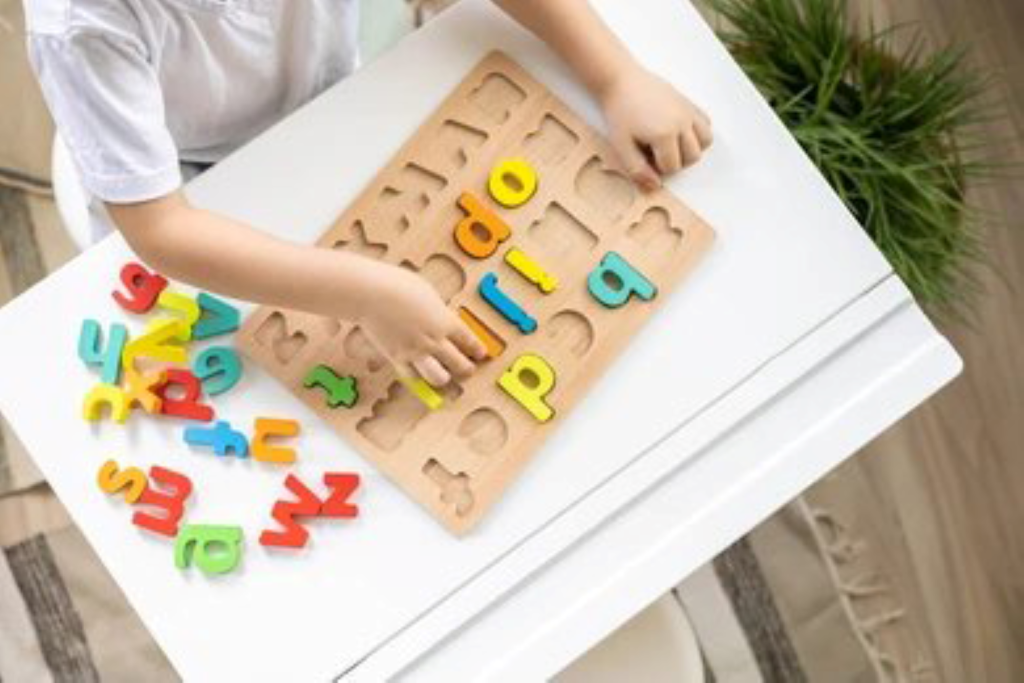WPPSI Test: Assess Your Child’s Cognitive Abilities

The WPPSI (Wechsler Preschool and Primary Scale of Intelligence) Test helps evaluate kids. It’s for those aged 2 years 6 months to 7 years 7 months. This test looks at a child’s thinking skills. It helps find out if they might have special learning needs or if they’re very smart. The WPPSI test looks at Verbal and Performance IQ scores. It also checks how fast your child can process information.
Many private schools and gifted and talented programs use this test during admissions. It can find if a child has cognitive delays, learning disabilities, or is exceptionally bright.
Free WPPSI Practice Test Online
Key Takeaways
- The WPPSI Test evaluates cognitive abilities of children aged 2.5 to 7.25 years old
- The test uses subtests to determine Verbal, Performance, and Processing Speed IQ scores
- The WPPSI-IV is commonly required for private school and gifted program admissions
- It can identify developmental delays, learning disabilities, and intellectual giftedness
- Proper test preparation can help children demonstrate their full cognitive potential
What is the WPPSI Test?
The WPPSI is a big test for kids. It checks how smart they are and how they use their minds. Kids from 2.5 to 7.25 years old take this test to show what they know. It looks at how well they do things and think.
This preschool intelligence test has different parts. Each part helps figure out a child’s unique abilities. The test checks their words, actions, and how fast they can process information. All of these parts together show how smart a child is at these ages.
Purpose and Uses
The WPPSI-IV is key for getting into private schools and gifted programs. It’s part of how kids are picked. Plus, this test can spot if a child needs extra help with learning. It can even tell if a child is especially gifted.
Age Range and Administration
The WPPSI is for kids 2 years 6 months to 7 years 7 months old. A psychologist gives the test one-on-one. It only takes about an hour to finish.

WPPSI (Wechsler Preschool and Primary Scale of Intelligence) Test Structure
The WPPSI-IV test has 14 subtests in Core, Supplemental, or Optional types. For kids 2.5 to 3.11 years old, there are 5 subtests like Receptive Vocabulary and Block Design. Older kids, 4 to 7.7 years, takes the first 5 plus 13 more, like Vocabulary and Coding.
Primary Index Scores
The WPPSI-IV test has 5 main scores: VCI, VSI, FRI, WMI, and PSI. These scores show a child’s skills in understanding words, seeing things in their mind, figuring things out, remembering things, and doing tasks quickly and accurately.
Ancillary Index Scores
Besides, the WPPSI-IV also gives 4 more scores: VAI, NVI, GAI, and CPI. These extra scores help see a child’s overall thinking abilities, both in words and without talking.

Understanding WPPSI Scores
Standard Score Ranges
The WPPSI-IV uses standard scores to gauge how well a child did on an intelligence test. The average score is 100, with a 15-point standard deviation. Scores show where a child’s cognitive ability stands compared to others.
These scores range from Extremely Low (below 70) to Very Superior (130 and above).
Age Bands
The WPPSI-IV now measures kids in three age groups. This includes kids 0-3, 4-7, and 8-11 years old. It makes sure the test fits the child’s developmental stage.
The goal is to accurately check a child’s cognitive development. This is by using tasks that match their age and school readiness level. The age bands also consider various abilities and milestones as the child grows.
Conclusion
The WPPSI (Wechsler Preschool and Primary Scale of Intelligence) Test is a great test. It looks at a child’s intelligence, how they’re developing, and where they might be really good or need help. It checks a bunch of different skills to see if a child is developing as they should or if they’re super smart.
This test is used in many ways. It can help a child get into school. Or, it can show if a child needs help early on. The test gives scores that everyone understands. It uses many different parts to look at a child’s thinking skills. This helps make sure every child gets the right help for them to do their best.
To sum up, the WPPSI Test is key to really understanding a child’s brainpower and how they’re growing. Parents, teachers, and others can use these results to plan the best way to help a child learn. With the right support, a child can do very well in school and later on in life.
FAQ
What is the WPPSI Test?
The WPPSI Test is for children between 2 years 6 months and 7 years 7 months. It measures their cognitive skills. This helps spot any developmental issues early or finds gifted kids.
What is the purpose and uses of the WPPSI Test?
Many private schools and gifted programs use the WPPSI-IV in their admissions. It checks for cognitive delays, learning problems, or high intelligence.
What is the age range and administration of the WPPSI Test?
It’s for kids between 2 years 6 months and 7 years 7 months. A trained psychologist gives the test one-on-one. It usually takes under an hour.
What is the structure of the WPPSI Test?
The WPPSI-IV has 14 subtests grouped into Core, Supplemental, and Optional sections. For kids under 4, they do 5 subtests. Older kids do these and more per their age group.
What are the primary and ancillary index scores of the WPPSI Test?
It scores on five main areas like VCI or FRI, and also on four extra areas including GAI. These scores help understand a child’s performance better.
How are WPPSI scores interpreted?
The WPPSI-IV uses standard scores with 100 as average and 15 points as a unit. These scores show how a child’s abilities compare to others, from Extremely Low to Very Superior.
How does the WPPSI Test account for different age groups?
The WPPSI-IV adapts to three age brackets: 0-3, 4-7, and 8-11 years. This tailors the test to each child’s developmental stage, making it more fair and precise.